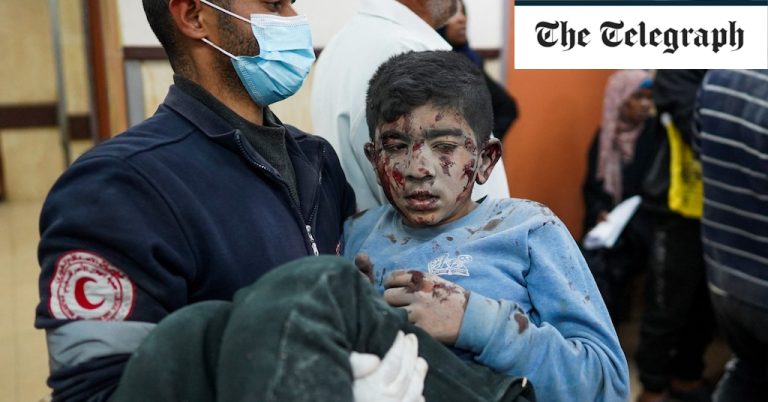Médecins Sans Frontières (MSF) co-ordinator Marie-Aure Perreaut Revial witnessed the pitiful sight of scores of children having their limbs amputated in the al-Aqsa hospital only last week.
“It is completely devastating to see,” she admitted. “Babies as young as one year old are being amputated. These are babies that have never learned to walk, and now they never will walk [unaided].
“I saw many patients who arrived at the hospital who had already lost their legs and their arms. And then there were others badly injured in a blast who had to be amputated because the lack of access to healthcare and post-operative care means their wounds will otherwise be infected.”
With little indication of Israel loosening its tight control of border crossing points for more medical evacuations, agencies fear that thousands of those maimed who have not yet been operated on risk infection.
Limb injuries ‘have to wait’
In Gaza, where just under half of the population are under 18, a substantial proportion of the young will grow up hampered by a war-inflicted disability because their stumps cannot be surgically prepared for prosthetic fitting.
“A generation of child amputees is emerging,” said Aseel Baidoun, Director Advocacy and Campaigns for Medical Aid for Palestinians (MAP).
“We know that Gaza’s collapsed medical system is too over stretched to give children with long term injuries the intricate follow-up care they need to salvage their still-growing, truncated bones.
“I have heard from surgeons with MAP’s emergency medical teams in Gaza that hospitals are so overwhelmed already that they can only treat patients needing life-saving procedures, such as neurosurgical or vascular injuries, while limb injuries have to wait.”
Official figures put the number of Ukrainians who have undergone amputations since Russia’s full-scale invasion two years ago at 20,000. Some believe the real number might be much higher, up to 50,000.
Over the course of the First World War, historians estimate that in Germany the number of amputations totalled 67,000, while in Britain it was 41,000.
New weapons being used on a previously unimaginable scale, coupled with problems like frostbite and infection in the trenches, contributed to so many soldiers losing their limbs.
